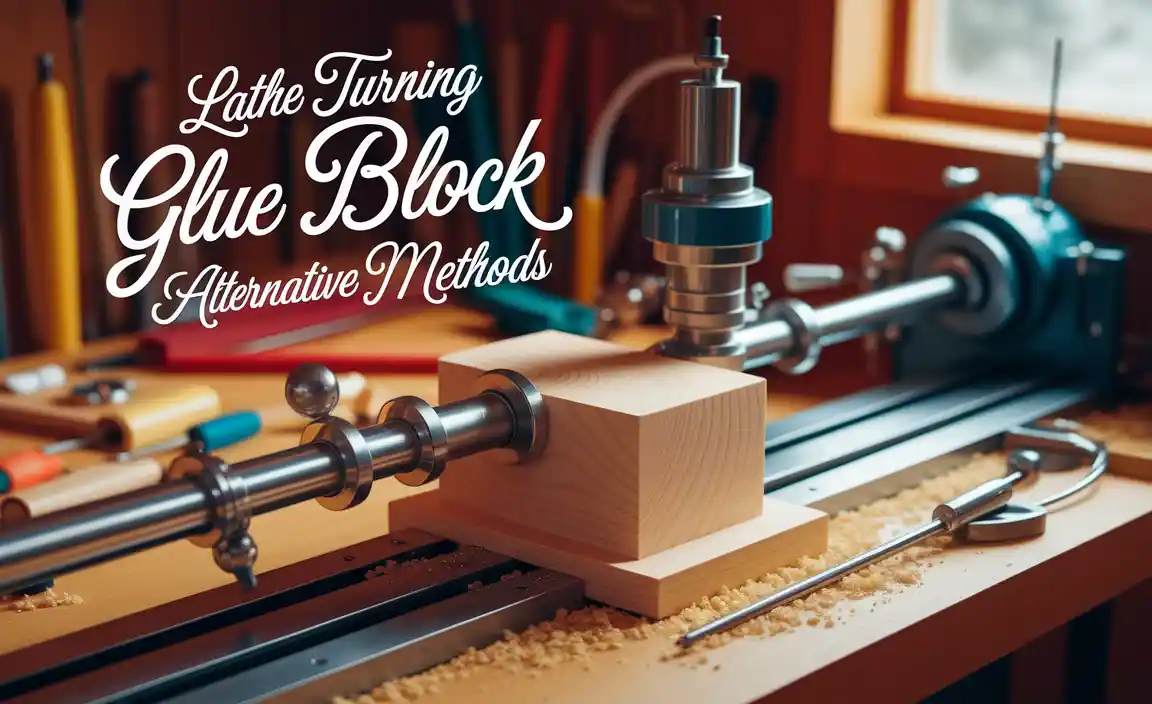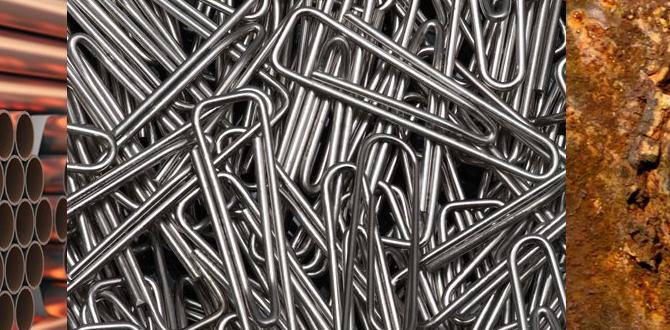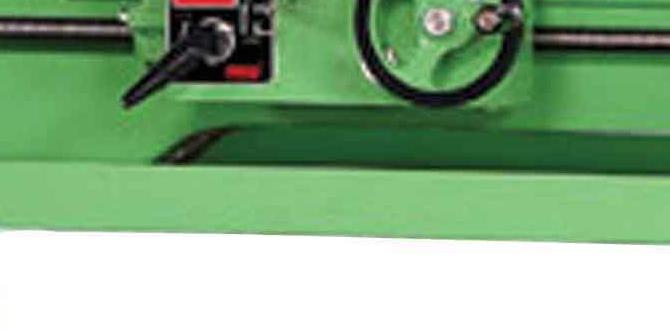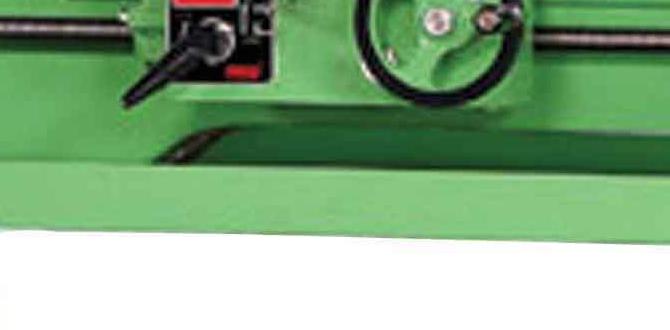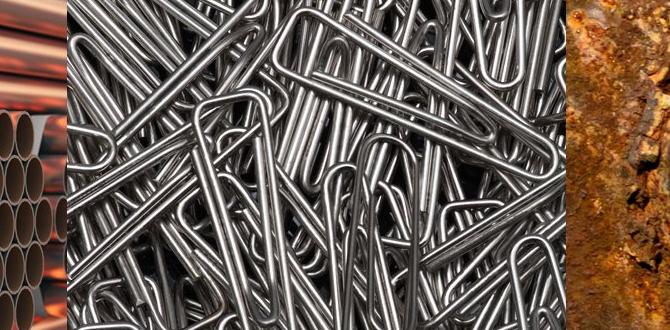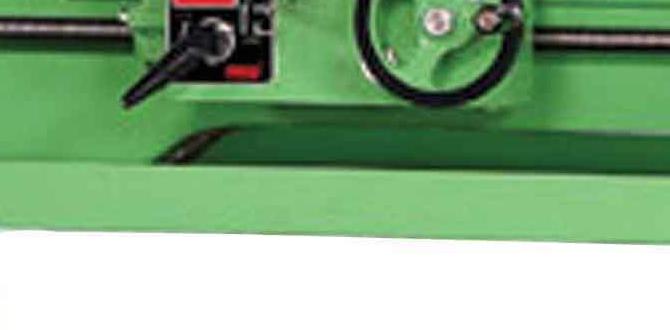Have you ever watched a metal lathe at work? It’s fascinating! A lathe spins metal, allowing you to shape it with a special tool. One of the key tools used for this is the lathe parting tool. This tool helps cut metal into specific shapes and sizes. It’s like a magic wand for metalworkers!
Imagine you have a piece of metal and you want to create a perfect ring. How would you do it? A lathe parting tool makes this job easier. With just a quick cut, you can create a clean separation. It’s straightforward, but that’s what makes it so powerful.
Did you know the parting tool is often one of the first tools learned by beginners? It’s simple yet essential. Everyone loves to see what they can create using it.
In this article, we’ll explore all the details about the lathe parting tool for your metal lathe. We’ll share tips, tricks, and everything you need to know. So, are you ready to dive in? Let’s get started!
Essential Guide To Lathe Parting Tool For Metal Lathe Use
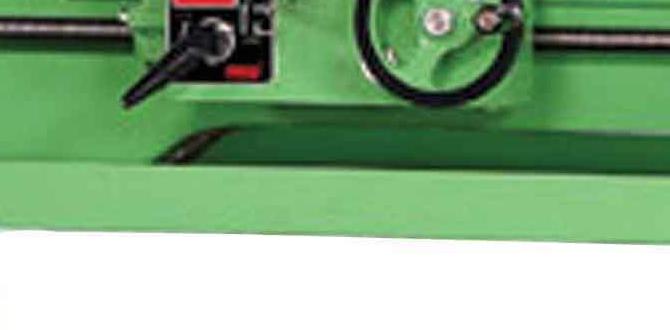
Understanding Lathe Parting Tools for Metal Lathes
A lathe parting tool is essential for cutting pieces from larger metal work. It creates clean, straight edges, making your projects look professional. Have you ever wondered how machinists slice through metal so smoothly? The secret lies in this special tool. It fits into the lathe and works by cutting with a sharp edge. Choosing the right parting tool can make a big difference in your metalworking journey. Plus, knowing how to use it can save time and materials!Understanding Lathe Parting Tools
Definition and purpose of parting tools. Differences between parting tools and other cutting tools.Parting tools are special cutting tools used in lathes. Their main job is to cut off material from a larger piece. Think of them as scissors for metal! Parting tools are different from regular cutting tools. They create narrow cuts and fit into tight spaces. Regular tools often make wider cuts.
- Purpose: Cut materials cleanly.
- Use: Fit into smaller gaps.
- Shape: Slim and flat design.
What are the benefits of using a parting tool?
Using a parting tool makes cutting easier and cleaner. It helps save time and material. They work great for making precise shapes and designs.
Types of Lathe Parting Tools
Traditional parting tools: materials and designs. Modern parting tools: Insert technology and advantages.When it comes to lathe parting tools, we have two main types: traditional and modern. Traditional tools are often made from high-speed steel, featuring simple designs. They work like a charm but can be a bit slow. On the other hand, modern tools use fancy insert technology. This means they are faster and can last longer because they change the cutting edge instead of the whole tool!
| Type | Material | Advantages |
|---|---|---|
| Traditional | High-speed steel | Reliable and easy to sharpen |
| Modern | Ceramic or Carbide Inserts | Faster cutting and longer life |
So, whether you’re a fan of old-school or new-tech, there’s a parting tool for you. Just remember, with every cut, it’s all about keeping it sharp and fun! Who knew tools could have personalities?
Choosing the Right Parting Tool for Your Metal Lathe
Factors to consider: material, size, and compatibility. Tool geometry and its impact on performance.Picking the right parting tool for your lathe can be tricky. Consider material, size, and compatibility. The right material helps with strength and wear. Size matters too; it should fit your lathe. Check that it matches your machine for best results. Tool geometry, like shape and angle, impacts how well it cuts. A well-designed tool makes work smoother and faster.
What factors should I consider when selecting a parting tool?
Look for material, size, and compatibility. Geometry affects performance too.
Key Points:
- Material: Strong materials last longer.
- Size: Fit the tool to your lathe.
- Compatibility: Confirm it’s right for your machine.
- Geometry: Better shape means easier cutting.
How to Properly Use a Parting Tool
Stepbystep guide to setting up your parting tool. Best practices for achieving clean cuts.Using a parting tool is like slicing a cake, but with metal! Start by securely fastening your tool in the tool holder. Always align it correctly to prevent any surprises. Set your lathe speed low for better control. Now, here’s a pro tip: keep your cuts clean and steady. A smooth touch works wonders, just like butter on toast! If you’re feeling fancy, check out this handy table for best practices:
| Step | Action |
|---|---|
| 1 | Secure your parting tool correctly |
| 2 | Align it with the workpiece |
| 3 | Set a low lathe speed |
| 4 | Make steady, smooth cuts |
Remember, practice makes perfect! So, take your time and keep those fingers safe. Nobody wants a metal masterpiece that costs a finger or two!
Common Problems and Solutions with Parting Tools
Identifying issues: binding, chattering, and tool wear. Tips for troubleshooting and maintaining parting tools.Using a lathe parting tool can be tricky. Common problems include binding, chattering, and tool wear. Binding happens when the tool gets stuck. Chattering makes a loud noise and creates uneven cuts. Tool wear slows down your work. To fix these issues, always keep your tool sharp and clean. Here are some quick tips:
- Check the tool alignment before starting.
- Use the right speed for your material.
- Lubricate the tool to reduce friction.
Staying vigilant about tool condition leads to better results!
What are common issues with parting tools?
Common issues include binding, chattering, and wear. These can affect cut quality and efficiency if not addressed.
Maintenance and Care for Lathe Parting Tools
Cleaning and lubrication techniques. Sharpening methods to extend tool life.Keeping lathe parting tools in good shape is important. Clean them after each use. Wipe away dirt and chips with a cloth. Use a soft brush for smaller areas. Lubrication is key too. Apply a few drops of oil to moving parts to reduce friction. This helps them work better.
Sharpening your tools extends their life. Use a sharpening stone for a smooth edge. This makes cuts cleaner and easier. A well-maintained tool lasts longer and works better.
How do you clean and maintain lathe parting tools?
To clean and maintain lathe parting tools, follow these steps:
- Wipe with a dry cloth after use.
- Brush out any chips with a soft brush.
- Apply oil to moving parts regularly.
- Sharpen with a stone as needed.
Advanced Techniques for Parting Operations
Techniques for deep parting and complex profiles. The role of speed and feed rates in parting.Mastering advanced techniques can elevate parting operations. For deep parting and complex shapes, use proper tool angles. A sharp lathe parting tool is essential for smooth cuts. Also, adjusting speed and feed rates makes a huge difference. Faster speeds mean quicker cuts. However, slower speeds offer better control. Remember these points for success!
What are the best techniques for parting operations?
Techniques for parting operations include using the right angles, tool sharpness, and speed settings.
Key Techniques:
- Choose the correct tool angle.
- Keep your lathe parting tool sharp.
- Adjust speed and feed rates smartly.
Conclusion
In summary, a lathe parting tool is essential for cutting metal on a lathe. It helps create clean, precise cuts. By using this tool, you can improve your metalworking skills. We encourage you to practice with a lathe parting tool and explore more guides online. Learning and experimenting will make you a better metalworker!FAQs
What Is The Primary Function Of A Parting Tool In A Metal Lathe?A parting tool helps cut off pieces of metal on a lathe. You can use it to separate a finished part from the main block. This tool looks like a flat blade. When you push it into the metal, it slices through easily. It helps us make clean cuts.
How Do You Properly Set Up And Align A Parting Tool For Optimal Cutting On A Metal Lathe?To set up a parting tool on a metal lathe, first, place the tool holder in the right spot. Make sure the tool tip is level with the center of the workpiece. Then, tighten the tool holder so it stays in place. Finally, slowly move the tool into the metal to start cutting, checking for smoothness. Always be careful and wear safety gear!
What Materials Are Commonly Used For Parting Tool Blades, And How Do They Affect Performance?Parting tool blades are commonly made from high-speed steel, carbide, and cobalt. High-speed steel is tough and keeps its shape well when cutting. Carbide is harder and lasts longer, but it can chip if you drop it. Cobalt adds strength to high-speed steel, making it even better for tough jobs. Each material affects how long the blade lasts and how well it cuts.
What Safety Precautions Should Be Taken When Using A Parting Tool On A Metal Lathe?When using a parting tool on a metal lathe, always wear safety glasses to protect your eyes. Keep your hair and loose clothes away from the machine. Make sure your fingers are safe and away from the spinning parts. Check that the tool is sharp and secure before starting. Finally, don’t be distracted while you work; focus on what you’re doing.
How Can You Troubleshoot Common Issues, Such As Tool Chatter Or Excessive Wear, When Using A Parting Tool?To fix tool chatter, try slowing down your cutting speed. You can also use a sharper parting tool. If the tool wears out too fast, make sure you are using the right pressure. Check if the tool is aligned correctly and adjust it if needed. Regularly check your tools so they last longer.

